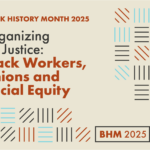
Asian Heritage Month: Canada must do more to eliminate anti-Asian racism
As Canada prepares to mark Asian Heritage Month in May, anti-Asian racism and xenophobia have continued to rise consistently across the country over the past two years.
A national report released by the Chinese Canadian National Council Toronto Chapter and Project 1907 shows that anti-Asian racism and xenophobia have continued to rise consistently across Canada two years into the pandemic.
“Historically, Asian Canadian workers faced exclusion from organized labour. They were barred from joining unions in numerous sectors, limiting opportunities for gainful and fair employment. Sadly, the discrimination and racism experienced by Asian workers is not relegated to the past. Workers continue to face anti-Asian racism in workplaces and unions, as well as – and increasingly since the start of the COVID-19 pandemic – in society at large,” said Larry Rousseau, Executive Vice-President of the Canadian Labour Congress (CLC).
Canada’s unions are committed to working to eliminate anti-Asian racism and discrimination, both in the labour movement and society. This includes carrying on the work started by the CLC’s Anti-Racism Task Force, which developed a crucial report with recommendations on what needed – and still, 25 years later, needs – to be done within union structures to live up to the labour movement principles of justice and equality.
“We must do everything we can to adequately reach out to and support Asian workers to join and get involved in unions as workers and leaders, ensure that Asian workers are properly represented and supported as union members and support and amplify the great work being done by Asian community and labour activists across Canada,” said Lily Chang, CLC Secretary-Treasurer.
Asian Heritage Month is a time to celebrate and recognize workers from across Asia. It is an opportunity to highlight the rich and varied contributions made by generations of Canadians of Asian descent, and reflect on everything they have overcome. This includes the struggles of Asian workers in securing labour and human rights and facing racism and discrimination within workplaces, trade unions and broader society.
In the 1800s, an estimated 17,000 Chinese workers were first brought to Canada as indentured labourers to build the Canadian Pacific Railway. Workers laboured under dangerous and difficult conditions. They faced widespread racism from employers, government and from within the communities in which they worked and lived.
Asian workers also faced discrimination and exclusion in certain industries. In British Columbia, for example, the province’s Inspection of Metalliferous Mines Act of 1897 barred Japanese and Chinese workers from the metal mining industry. Asian workers were also excluded from public works projects, and several subsequent laws prohibited Asian workers from being hired by smaller railway companies in the province. While many South Asian workers found work in the lumber industry after arriving in Canada in the early 1900s, a law passed shortly thereafter barred all Asian workers from holding logging licenses.
Action:
Help us celebrate the contributions made by Asian communities in Canada. Share a story today.
Learn more:
As Asian Canadian scholars, we must #StopAsianHate by fighting all forms of racism
Doing the Work: Race, Labour and Transformative Justice
Short Documentary: Toronto Solidarity Rally Against Anti-Asian Racism





